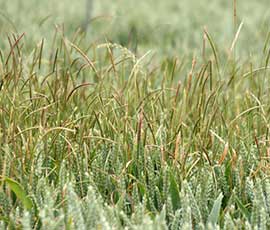Blackgrass sprays need a residual partner

Growers looking to control blackgrass this autumn should act now and add residual partners to mainstream herbicides to boost performance and counter weed resistance.
Blackgrass resistance is building to a number of herbicides, especially post-emergence ones like Atlantis and Unite, so tank mixes or stacking different weedkillers becomes key.
Colin Lloyd, head of agronomy at distributor Agrii, says the best blackgrass control he is seeing from Atlantis is just 25-35% once herbicide resistance starts to build up.
“If you have resistant blackgrass then the longer you wait, the worse it will get. So if you are planning to use Atlantis, use it now,” he says.
Active ingredients
- Atlantis: Iodosulfuron + mesosulfuron
- Unite: Pyroxsulam + flupyrsulfuron
Mr Lloyd adds that with soil temperatures relatively high then growers should look at control now, and not wait until the blackgrass plants are larger in the spring.
“Once blackgrass reaches any reasonable size then control post–emergence is virtually negligible without good residual support,” he adds.
His work at Agrii’s Stow Longa site, near Huntingdon, shows Atlantis applications need to be at the one to two leaf stage of blackgrass once resistance has started to bite.
He suggests boosting control by using residual herbicides such as flufenacet, diflufenican or pendimethalin to add to the largely contact-acting Atlantis or Unite.
The choice of a residual partner will depend on what growers have used pre-emergence, and growers should check product labels when formulating post-emergence tank mixes.
With dry seed-beds in September limiting the performance of pre-emergence herbicides, the rain in October should mean post-emergence treatments should work better, Mr Lloyd adds.
“If you are looking at blackgrass now, you need to top up a spray like Atlantis with a residual partners,” he says.

